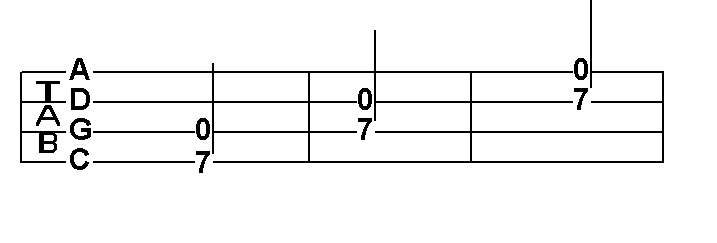Mike Moxcey ©2005
Tenor (4-String) Banjo Tuning
The banjo was invented in America. It was brought over by the slaves as a 3- or 4-string instrument played in “frailing” style where the right thumb plucks the short string during strums. Joel Walker Sweeney was credited with adding the bass string (the 4th) string and popularizing the banjo through Minstrel Shows in the 1840s. Early in the 20th century, violinists removed the short 5th string and re-tuned the instrument like a violin so they could play the new dance: the tango.
There is also a 4-string Plectrum banjo that has a longer neck and is tuned differently.
The tenor banjo is tuned in fifths like the mandolin and violin:
C G D A from the 4th string to the first.
Every string is tuned to the 7th fret of the next lower string.
-
The basic tuning strategy is to
- tune the 4th string, the heaviest one, to a C note from a piano or tuner or pitchpipe or some other device.
-
Then you fret the 4th string at the 7th fret and tune the 3rd string to that note (G).
-
Then you fret the 3rd string at the 7th fret and tune the 2nd string to that note (D).
-
Then you fret the 2nd string at the 7rd fret and tune the 1st string to that note (A).
Here is what the tuning notes look like in tab. For each pair of doubled notes, the open string is the one you’re trying to tune and the fretted one is the note you strike first to hear what the open string should sound like.

The horizontal lines on the tab are strings.
The bottom line of the tab stands for the top string, the 4th string or the heaviest one on the banjo.
The top line of the tab stands for the 1st string of the banjo, the one that is closest to the floor.
The numbers mean to pluck a string.
“0” means pluck it open (unfretted).
A number means to fret the string at the appropriate number and then pluck it.
Techniques Index
